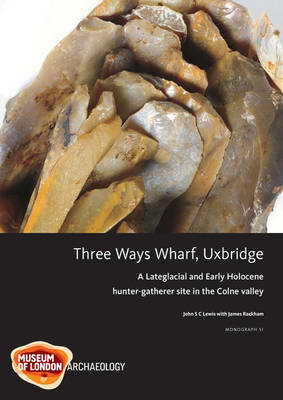This eagerly awaited volume documents the evidence for human activity in the Colne valley at Three Ways Wharf, Uxbridge in the Lateglacial and Early Mesolithic periods. A series of five in situ lithic and faunal scatters, centred on hearth settings on local high points within the valley floor, belong to two main phases of hunter-gatherer activity. The earlier phase, characterised by Lateglacial bruised-edge 'long blades' of the north German Ahrensburgian technocomplex, associated with reindeer and horse, is dated to c 10,000 BP. The succeeding Early Mesolithic phase is typified by broad, obliquely backed flint points, associated with a fauna dominated by red and roe deer, and dated some 800 radiocarbon years later at c 9200 BP. Detailed analyses of the important faunal and lithic assemblages, bolstered by an extensive refitting programme, have been fully integrated to provide new and striking behavioural explanations. These hunter-gatherer groups can now be seen as groups of people intent on pursuing their own independent and socially defined goals, and no longer solely in terms of their adaptive responses to environmental pressures. Three Ways Wharf will come to take its place alongside other iconic sites of the period such as Star Carr, Broxbourne and Thatcham.
- ISBN10 1901992977
- ISBN13 9781901992977
- Publish Date 15 December 2010
- Publish Status Active
- Publish Country GB
- Imprint Museum of London Archaeology
- Format Hardcover
- Pages 226
- Language English
